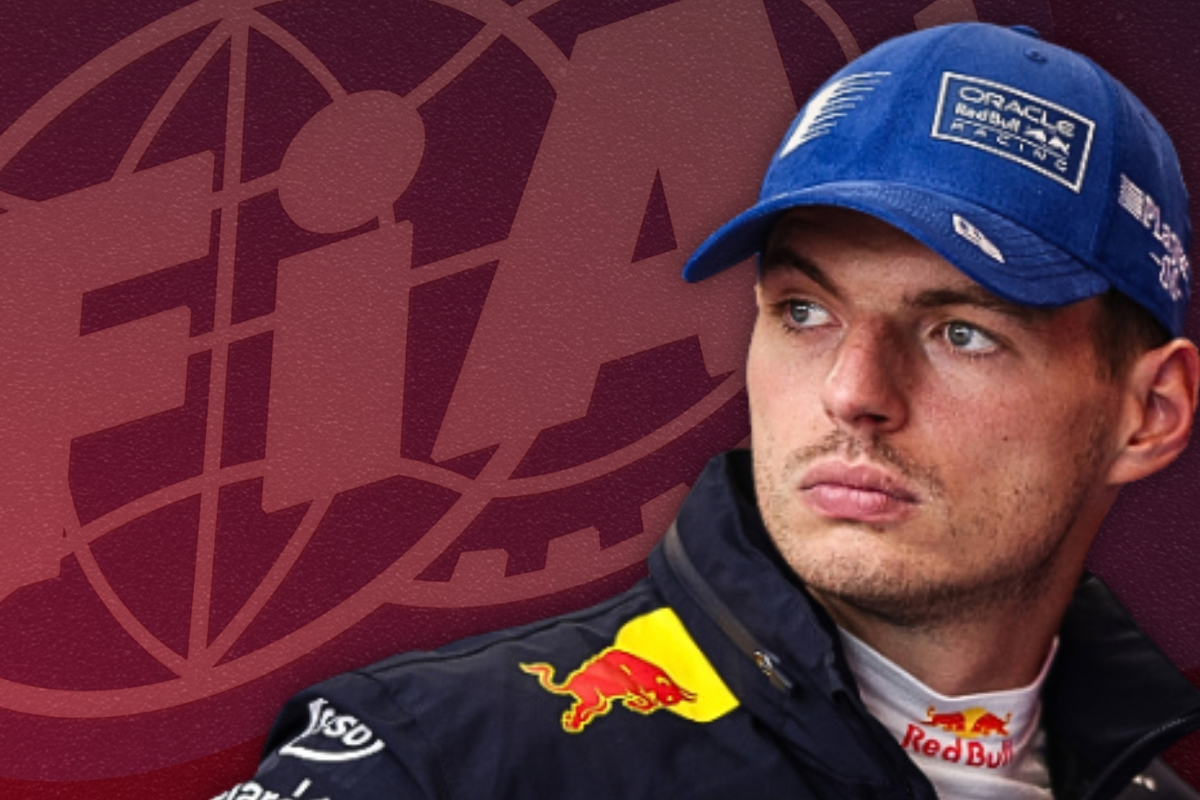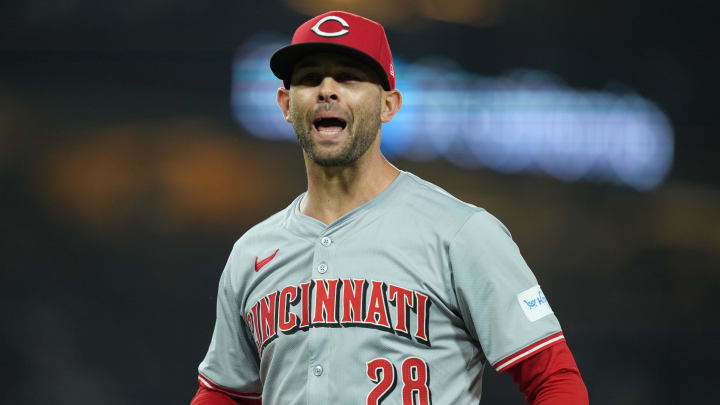F1 News Today: 29 year old Max Verstappen Dutch-Belgian motorsports racing driver just terminate his contract and announce….
Now a three-time world champion, Max Verstappen’s meteoric rise to the pinnacle of Formula 1 has seen the Dutchman smash numerous records and break new ground en route to becoming today’s most dominant force.
Son of former F1 driver Jos Verstappen (Bennetton, Simtek, Arrows Stewart, Tyrrell, Minardi), Max received his 2015 F1 debut with Scuderia Toro Rosso for what was remarkably only his second full season of single-seater racing.
Promoted straight from the FIA European Formula 3 Championship, the combination of Verstappen’s age (17 years and 166 days at the time of his Australian Grand Prix race debut) and scant experience led to the FIA overhauling the criteria for obtaining a superlicence to prevent similarly young drivers landing a seat.
Despite the controversy, Verstappen went on to acquit himself well during his first year with Toro Rosso, which preceded his promotion to Red Bull Racing five rounds into the 2016 F1 season, an occasion he historically marked by claiming a stunning maiden victory on his debut with the team.
Going on to establish himself as a talisman in the Red Bull Racing camp, one capable of taking the fight to an otherwise dominant Mercedes on occasion, the stars finally aligned for Verstappen in 2021 when the Honda-engined Red Bull RB16B proved a competitive match for its German rivals.
Engaging in a fierce – if at times physical – season-long tug-of-war with Lewis Hamilton, Verstappen prevailed in a hugely controversial Abu Dhabi finale defined by a safety car engineered pass for the lead on the final lap, giving him both victory and the title.
Verstappen followed up his maiden championship with two dominant runs to the title in 2022 and 2023, kicking off F1’s new era of technical regulations in fine style.
Verstappen headed into 2023 having firmly become F1’s man to beat following a dominant 2022 campaign that initially seemed unlikely to repeat. But come the opening race in Bahrain, it was clear that the gap between Red Bull and its rivals had increased as the team scored a 1-2 with third-place Fernando Alonso finishing 38.6 seconds behind winner Verstappen.
The RB19’s superiority remained clear as it claimed three 1-2s in the opening four grands prix, yet Verstappen was facing a fight from team-mate Sergio Perez who won just as many races (two) as the Dutchman in those early rounds.
But in Miami, Verstappen started a record-breaking run of 10 consecutive race victories – surpassing Vettel’s nine from 2013 – meaning the gap between himself and Perez was never so big. It therefore became clear during the streak that Verstappen was a triple world champion in waiting, however the run of consecutive wins was ended by Carlos Sainz in Singapore, when the Red Bull driver finished fifth having struggled with car set-up throughout.
It proved to be a one-off though as Verstappen started another dominant run of seven consecutive grand prix wins which included clinching the championship in Qatar. That meant Verstappen broke his own record for most wins in a season with 19, while setting several other feats in a year where he truly was a class-apart from the rest of
Putting the controversy surrounding his maiden title victory behind him, Verstappen set about consolidating his title defence by making it back-to-back championships.
Though F1’s all-new technical directive posed a challenge for Red Bull initially when mechanical gremlins forced Verstappen to retire from two of the opening three races, he quickly found his stride thereafter.
Repelling a burgeoning early season threat from Ferrari, Verstappen tallied eight victories before the summer break, stretching clear with three more once action resumed.
It meant Verstappen was able to avoid a repeat of the previous year’s dramas to clinch his second title well in advance of the finale, getting the job done with five grands prix to spare at Suzuka.
Verstappen went on to end a dominant season with 15 wins to his name, establishing a new F1 record for victories achieved in a
After playing second fiddle to Mercedes from the start of the V6 Hybrid era, Red Bull Racing made the most of the regulation freeze over the winter to bring its RB16 package up to the standard of the Mercedes FW12, giving Verstappen his first realistic shot at a title challenge.
While Hamilton had the edge during the early stages of the season, Verstappen picked up his first win at a rainy Imola before a second at Monaco kick-started his momentum with a trio of wins from the next four races.
However, as their rivalry intensified, Verstappen and Hamilton became embroiled in the first of several high-profile controversies at Silverstone, a feud that went on to define a vintage championship tussle between the pair.
While another disappointing result in Hungary left Verstappen on the back foot heading into the summer break, two wins once racing resumed – including a rapturously received success on F1’s return to Verstappen’s home soil at Zandvoort – tilted the balance back in his favour.
After another collision during the Italian GP – prompted by Verstappen’s staunch defence from Hamilton at the first chicane leading to contact that left the Red Bull perched atop the Mercedes – the pendulum of momentum swung back and forth between the pair.
Verstappen picked up his eighth and ninth wins of the year in the United States and Mexico, only for Hamilton to reel him back in with victories in Brazil and Qatar.
Tensions reached boiling point on F1’s inaugural visit to Saudi Arabia when Verstappen – who was leading Hamilton on the road but had been informed that he must cede position to his rival following an illegal overtake – reduced his speed abruptly as they approached the final corner in a tactical attempt to pick up DRS detection.
The sudden deceleration caught Hamilton by surprise, causing him to clip the rear-end of the Red Bull. Despite the damage, Hamilton carried on towards victory, ahead of a penalised Verstappen, ensuring the pair arrived at the Abu Dhabi finale level on points.
With all to play for, Verstappen qualified on pole position but a lacklustre start gave Hamilton the lead coming through the first turns. The Dutchman responded with an attempt to overtake further round the lap, prompting Hamilton to cut the chicane in order to avoid contact between the pair.
Despite Red Bull’s protestations, Hamilton remained in a lead he’d steadily eke out into the closing stages.
With a record eighth F1 title just a handful of laps away, the race was turned on its head when the safety car emerged to allow debris to be cleared. However, while most of the field dived for the pitlane for new tyres, crucially Hamilton had just passed the pit-entry when the call was made.
It meant that while Hamilton led on the road, rivals – including Verstappen – were stacked up behind him on fresher rubber. As the final lap loomed, controversy ensued when FIA Race Director Michael Masi allowed only a handful of cars – those between Hamilton and Verstappen – to un-lap themselves, putting the Red Bull onto the rear of the Mercedes coming into the last revolution.
After overtaking Hamilton at Turn 5, Verstappen took the flag to be crowned Formula 1 world champion, becoming the first Dutchman in the series’ history to clinch the title.
After getting the delayed 2020 F1 season off to an inauspicious start with a DNF on Red Bull’s home soil in Austria, Verstappen hit a stronger run of form that consolidated his status as dominant Mercedes’ closest rival.
He scored a win at Silverstone in the 70th Anniversary GP with a second coming at the season-concluding Abu Dhabi GP, but it was a year of frustrating DNFs – five from the 17 races – that curtailed his title aspirations.
Save for the Turkish GP, Verstappen completed every race he finished – 11 in all –
The conclusion of Red Bull Racing’s successful, albeit fractious in later years, engine partnership with Renault heralded the start of its new era with Honda for 2019.
The arrival of Honda – which returned to F1 as an engine supplier in 2015 – at the front-running team was keenly observed following its three miserable seasons with McLaren tainted by reliability woes and internal disagreements.
However, while the power unit remained somewhat compromised when it powered the sister Toro Rosso cars in 2018, the Red Bull-Honda relationship proved both competitive and durable in 2019 with Verstappen suffering just two DNFs, both because of collisions.
A podium in the Australian GP opener marked the first for a Honda-powered F1 car since the 2008 British GP, with Verstappen going on to upgrade that to a first victory for Honda since the 2006 Hungarian GP with success in the Austrian GP.
A second win of the year followed soon during the wet German GP, with a third coming in the Brazilian Grand Prix. Scoring nine podiums in all, Verstappen ended the season in a career-best third overall behind the all-conquering Merce
A tough start to the season put Verstappen and Red Bull on the backfoot with just a single podium finish from the opening six events. But the team was able to develop strongly to put some form together, which included a fortuitous victory in Austria when Mercedes suffered a double DNF.
A stronger turnaround in the second half of the season, however, helped to consolidate Verstappen’s perceived No.1 status within the Red Bull team versus Daniel Ricciardo, with whom tensions had been rising since a controversial collision in Azerbaijan.
The pair had been dicing closely for several laps with repeated overtakes before Verstappen’s firm defence of position led to Ricciardo smashing into his team-mate’s rear-end, pitching them both into retirement.
Earning a firm rebuke from team principal Christian Horner, Verstappen bounced back to end the year with a second victory in Mexico, while seven podiums in the final nine races secured him four
Competing in his first full season as a Red Bull driver, Verstappen looked to build on his headline-grabbing 2016 campaign but a combination of errors and questionable durability from the RB13 TAG Heuer (Renault) package frustrated his progress.
With just a single podium finish from the opening 14 races, Verstappen’s season took a turn for the better with a second career victory in the Malaysian GP, followed shortly after by another in Mexico.
Three podiums in the final six races helped to lift Verstappen to sixth place in the overall standings.
2016
Scuderia Toro Rosso – Red Bull Racing
5th – 204 points
Having defied many of his critics during his rookie campaign, Verstappen headed into his second F1 campaign brimming with confidence of another step forward in the Toro Rosso.
He started the season well with points in three of the opening four races before unexpectedly being called up to replace the out-of-favour Daniil Kvyat in the Red Bull Racing squad from the Spanish GP onwards.
Immediately impressing to qualify fourth on the grid, Verstappen found himself in an advantageous position in the race after the dominant Mercedes cars of Lewis Hamilton and Nico Rosberg eliminated one another in a first lap collision.
With Verstappen sitting behind Daniel Ricciardo initially, Red Bull’s decision to split tactics proved critical once it emerged his two-stop strategy – compared to his team-mate’s three – would be more beneficial.
Putting Verstappen into the lead, despite fading tyres and pressure behind from Kimi Raikkonen, Verstappen held firm to take a sensational maiden win on his Red Bull debut. It made him the youngest driver to win an F1 race at 18 years and 228 days.
Verstappen maintained his tempo thereafter to put pressure on Ricciardo’s perceived team leader status with another six podiums coming his way before the year was out.
They included a headline-grabbing run to the rostrum in the Brazilian GP, Verstappen carving through the field following a spin in rainy conditions to go from 16th to third at the flag.
Red Bull caused a major stir by choosing Verstappen to join the Scuderia Toro Rosso team for the 2015 F1 season, the announcement having come mid-way through his first season of open-wheel racing while he was still just 16-years old.
To help him prepare for the substantial leap, Verstappen was given Friday free practice outings in Japan, the USA and Brazil. Though solid performances helped allay fears he would be out of his depth, scepticism of the signing led to the FIA shaking up its superlicence criteria, effectively preventing any driver from making such a rapid route to the series in future.
At 17 years and 166 days, Verstappen’s 2015 Australian GP debut made him the youngest driver to start an F1 race – almost two years younger than previous record holder Jaime Alguersuari.
Paired with highly-rated Red Bull Junior Carlos Sainz, while Verstappen’s racecraft lacked some finesse initially, he stacked up well against the Spaniard and impressed many to score points in only his second start at the Malaysian Grand Prix.
Though he drew ire from some rivals with his racing in the heat of battle and was involved in some controversial incidents, most agreed he was a raw talent with more to come.
As an example, though Verstappen was criticised for smashing into the back of Romain Grosjean’s Lotus in the Monaco GP, he was praised as one of the few drivers to make overtaking manoeuvres on his debut around the notoriously tricky street circuit.
Returning to the points for the second time with a run to eighth in Round 8, Verstappen went into the summer break with a spring in his step after landing a fine fourth place finish in Hungary.
Upon returning from the hiatus, Verstappen scored in all but two of the final eight races, among them another fourth place finish in the USA.
Ending the season 12th in the standings – well ahead of team-mate Sainz – Verstappen also won plaudits for unconventional overtakes not seen in F1 for some years, including an FIA award-winning moment during the Belgian GP when he overtook Felipe Nasr on the outside of the flat but tricky Blanchimont corner.



